Share the post "Master Texas Gardening with These 21 Tips: Your Ultimate Green Thumb Guide!"
With its many temperatures and landscapes, Texas offers unlimited gardening opportunities for individuals who love creating their own paradise. Texas gardening may provide gorgeous blooms and abundant harvests for beginners and experts alike. Our rich soils, regional climatic changes, and native species’ resilience make gardening tough and enjoyable.
We know that starting a Texas garden requires more than planting seeds and hoping. A delicate dance with Mother Nature, understanding of local climate zones, soil preparation, plant selection, and watering tactics all contribute to garden success. Following personalized gardening advice and strategies helps us interact with the environment to create lush, thriving landscapes. We’ll cover the best Texas gardening tips to make your garden beautiful and beneficial to your house, neighborhood, and ecosystem.
Key Takeaways
- Mastering Texas gardening improves homes and communities.
- Texas temperatures and soils require customized approaches.
- Careful plant selection and care produce successful gardens.
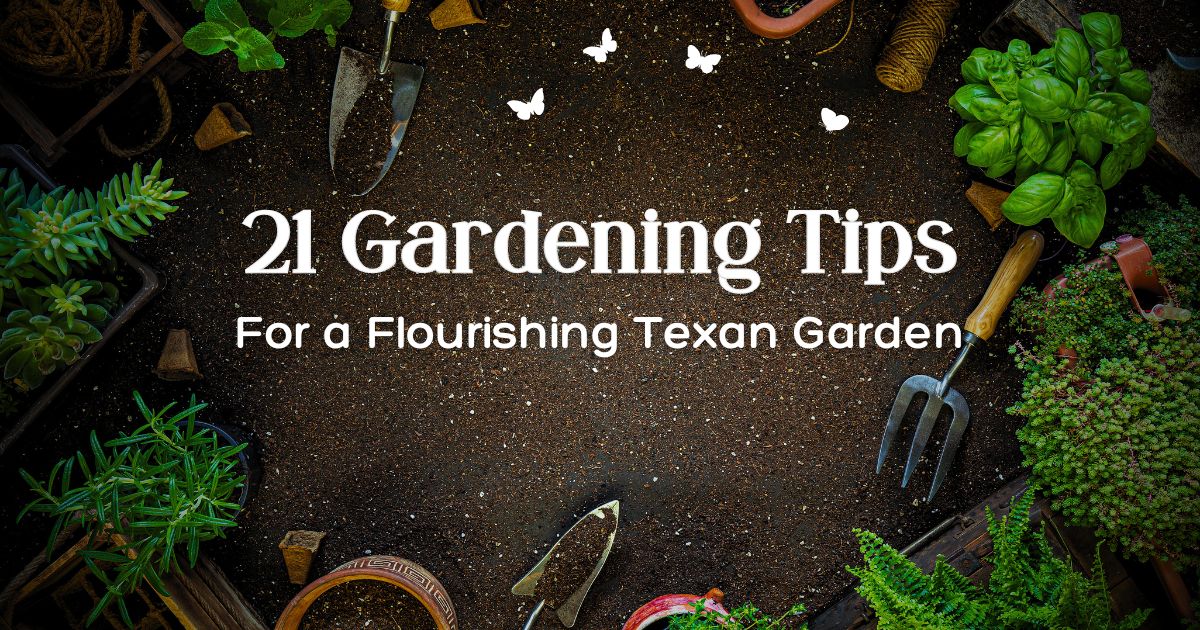
- Understanding Texas Climate Zones
- Selecting the Right Plants
- Soil Preparation Essentials
- Innovative Watering Techniques
- Organic Fertilizing Strategies
- Mastering Pruning Times
- Pest Control Practices
- Weed Management Techniques
- Embracing Seasonal Planting
- Gardening Tool Maintenance
- Raised Bed Construction and Benefits
- Composting for Soil Improvement
- Garden Design Principles
- Container Gardening for Small Spaces
- Native Flora Advantages
- Attracting Beneficial Wildlife
- Plant Disease Prevention
- Herb and Vegetable Gardening Tips
Understanding Texas Climate Zones
Texas gardening is an adventure, and one of the biggest factors that affect our success is the climate zones. We’re dealing with a state that has an incredible range of temperatures and conditions. So, let’s get to grips with what this really means for us Texas gardeners!
- Texas Hardiness Zones: Ranging from 6a to 10a, knowing your zone helps us pick the right plants that’ll thrive.
- Zone 6a: Expect colder winters here, and it’s wise to wait till late April or early May to plant to avoid frost.
- Zones 7a and 7b: These areas have a moderate winter, so we have a larger planting window.
- Zones 8a and 8b: Ours are warmer zones with mild winters, perfect for a variety of plants and veggies.
- Zone 9a and 9b: Think tropical! We can grow plants that love the heat and humidity.
Remember, we’re not just looking at cold hardiness; we’re embracing the heat, too, which is just as significant in Texas. The understanding the planting zones of Texas offers more insight into cold winter planting times for Zone 6a, while Mastering the Heat: Growing Vegetables in Texas provides essential tips for handling Texas heat across various zones.
Table: Average Minimum Temperatures of Texas Zones
| Zone | Temperature |
|---|---|
| 6a | -10 to -5°F |
| 7a | 0 to 5°F |
| 8a | 10 to 15°F |
| 9a | 20 to 25°F |
Let’s dive into the diverse climate zones and use them to our advantage. Let’s get our garden goals aligned with what our Texas weather has to offer!
For more specific details about the planting zone for your region, here are the main cities in Texas and their planting zones;
| City | Planting Zone | Additional Information |
|---|---|---|
| Houston | Zone 9a | Houston has a subtropical climate with hot, humid summers and mild winters. Common plants include azaleas, palms, and citrus trees. |
| Dallas | Zone 8a | Dallas has a humid subtropical climate with hot summers and cold winters. Plants like crape myrtles, pecan trees, and roses thrive here. |
| Austin | Zone 8b | Austin’s climate is characterized by hot, dry summers and mild winters. Native plants like Texas sage and agave are well-suited for this area. |
| San Antonio | Zone 8b | San Antonio shares a similar climate to Austin, with hot summers and mild winters. Consider planting lantanas, yuccas, and cacti. |
| Fort Worth | Zone 8a | Fort Worth has a climate similar to Dallas, featuring hot summers and cold winters. Popular plants include magnolias, dogwoods, and hollies. |
| El Paso | Zone 8a | El Paso’s climate is arid, with hot summers and mild winters. Xeriscaping with desert plants like agaves and succulents is common. |
| Corpus Christi | Zone 10a | Corpus Christi enjoys a coastal climate with hot summers and mild winters. Palms, hibiscus, and bougainvillea thrive in this area. |
| Lubbock | Zone 7b | Lubbock experiences a semi-arid climate with hot summers and cold winters. Drought-tolerant plants such as junipers and ornamental grasses are suitable. |
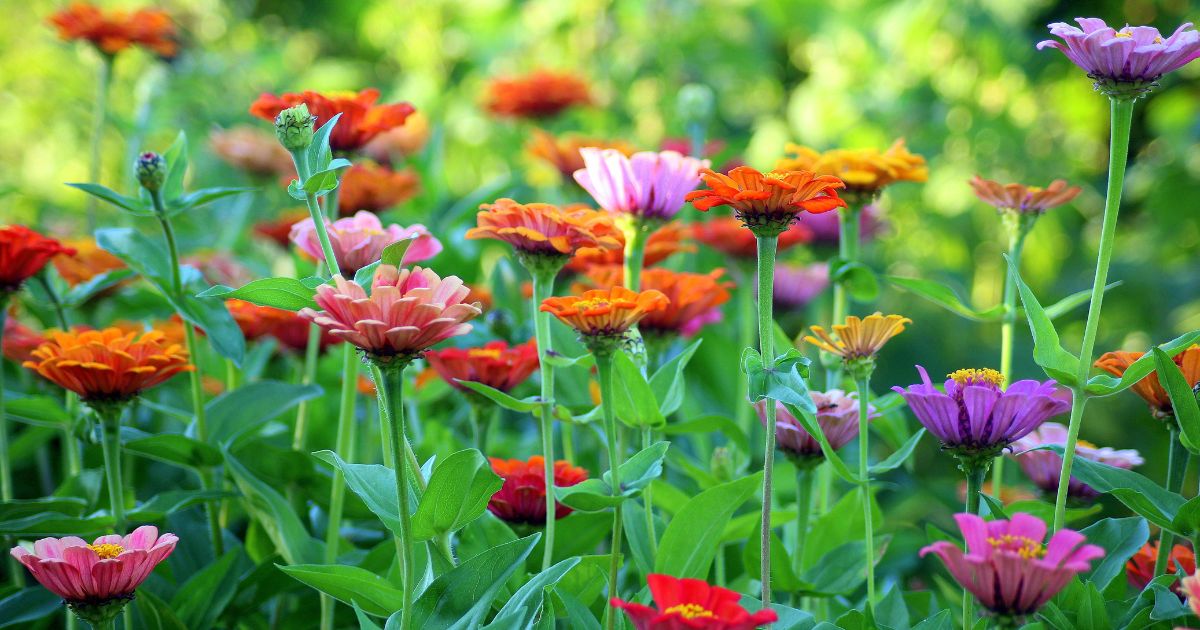
Selecting the Right Plants
When we embark on the rewarding journey of gardening in Texas, choosing the right plants is crucial. Our diverse Texan climate zones offer distinct planting opportunities, and we take pride in selecting flora that thrives across our grand state.
Here are key pointers that we follow:
- Know Your Zone: Texas spans several hardiness zones. We always find our planting zone to pick plants that will flourish in our specific area.
- Sunshine Savvy: Our plants need adequate sun, with many requiring at least 6 hours daily. For example, by planting fall vegetables in our gardens, we take full advantage of Central Texas’s abundant sunny days.
- Soil Matters: We give our plants the best start by enriching our soil. Proper pH and nutrient levels are essential, so we always do our soil tests.
- Drought-Tolerant Picks: Given our bouts of dry weather, we love adding Texas sage and blackfoot daisy to our collection for their resilience and low water needs.
- Native is Nifty: Native plants naturally adapt to our conditions, making them a wise choice for our gardens. We embrace the “right plant, right place” philosophy, as explained by fellow Texas Master Gardeners.
- Size and Space: Before we plant, we consider the mature size of plants to ensure we give them enough space to spread out and not overcrowd our garden beds.
Remembering these tips, we’re on our way to creating an enchanting Texas garden that’s not only beautiful but sustainable too!
Soil Preparation Essentials
We’re about to embark on a thrilling journey to ensure our garden’s foundation is as robust as it can be, and it all begins with soil preparation! Imagine the soil as a cozy bed for seeds; our goal is to make it so inviting that plants can’t help but thrive.
First, let’s talk about soil types. Whether we’re working with clay that clings like a childhood blankie or sand that slips through our fingers like memories of summers past, we can improve it! Adding organic matter is our secret weapon—it loosens tight clay and helps sandy soils hug onto water.
- For Clay Soils: Work in compost, leaves, or straw.
- For Sandy Soils: Add peat moss or compost to increase water retention.
Tilling appropriately primes our garden canvas. But wait! Do we even need to till? If our garden bed is new, tilling can help blend amendments and organize our space into rows. For existing beds, consider the no-till method to protect soil structure!
- New Beds: Till to a depth of 8-10 inches.
- Existing Beds: No-till can encourage natural soil health.
Finally, let’s queue up the row preparation. Think of each row as a potential gold mine for our plants. We must shape our garden rows ensuring proper drainage and accessibility.
- Row Creation: Mound soil to create rows about a foot wide with paths in between.
Armed with these soil preparation essentials, we’re all set to transform our Texas garden into a wonderland of growth and bounty.
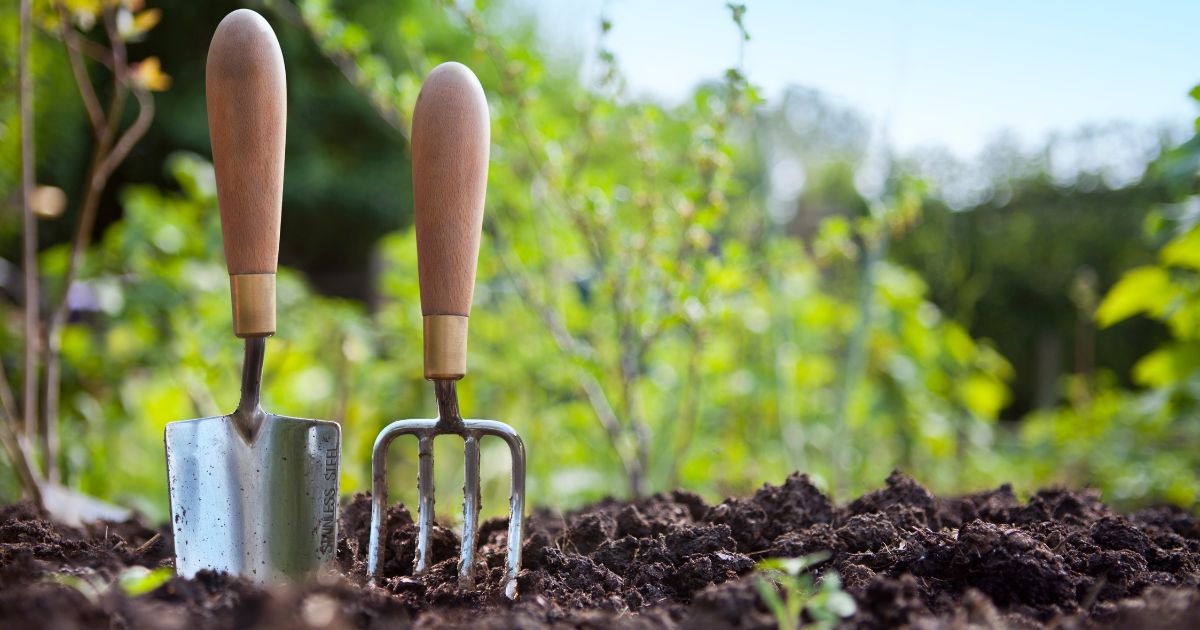
Innovative Watering Techniques
In Texas gardening, effective watering is not just about the quantity, but also about smart techniques that save water and nurture plants. Let’s explore some of the inventive ways we can ensure our gardens thrive while being water-wise.
Drip Irrigation Basics
Drip irrigation is a game-changer for us Texas gardeners. It allows us to direct water straight to the root zone, where plants need it most. By installing a network of tubing and emitters, we can minimize water waste and provide a consistent moisture level, vital for healthy plant growth. Here’s a quick guide:
- Set Up: Place drip lines near the base of plants.
- Timing: Schedule early morning watering to reduce evaporation.
Rainwater Harvesting
Harvesting rainwater is not just innovative; it’s a traditional method that we’re bringing back with a modern twist. We can collect rainwater from rooftops and store it in barrels or tanks. This practice offers us a sustainable water source that’s chlorine-free and perfect for our gardens. Here’s how to start:
- Collection: Install gutters and downspouts that direct rain to your storage system.
- Usage: Use a spigot or pump to water your garden during dry spells.
Mulching for Moisture Control
Mulch is our secret weapon for maintaining moisture. By applying a 2-to-4-inch layer of organic mulch around our plants, we not only prevent water loss through evaporation but also add nutrients as it decomposes. Select from leaves, pine bark, or grass clippings to keep the soil damp and plants happy.
Remember, these innovative watering techniques can take our Texas gardens to the next level of water efficiency and plant health. Let’s make every drop count!
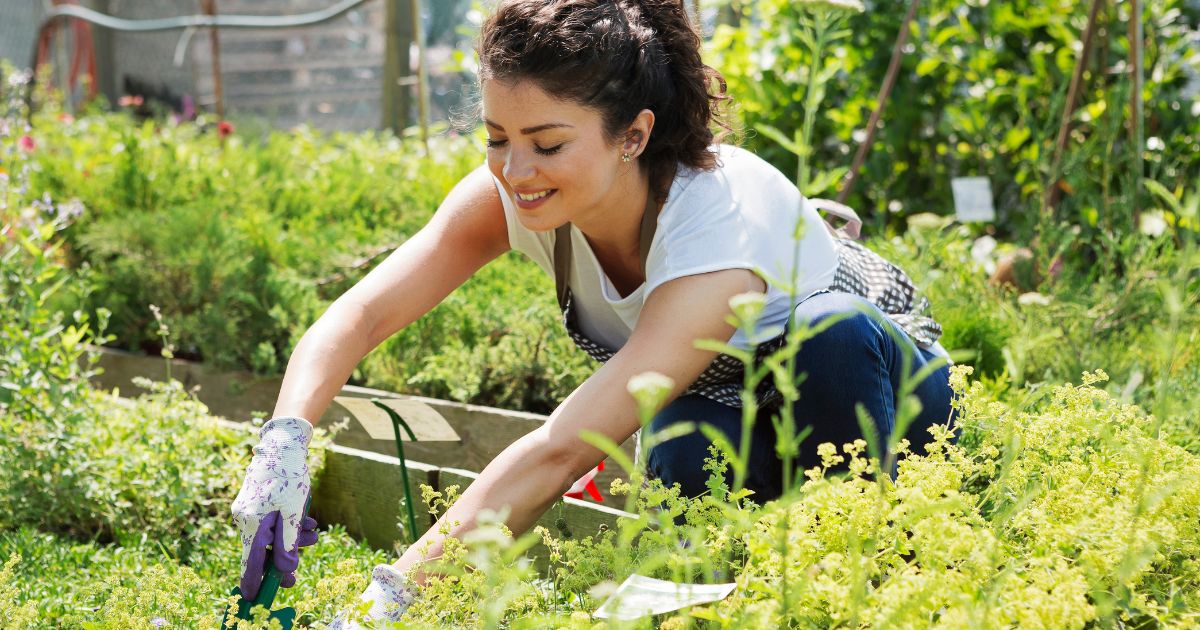
Organic Fertilizing Strategies
Enriching our gardens with organic fertilizers means we’re not just feeding our plants, we’re also improving our soil! Here are some top strategies we can use:
- Composting: It’s our go-to method! We turn kitchen scraps and yard waste into a nutrient-rich amendment that our plants love. It’s like creating a gourmet meal for our garden!
- Manure: Animal manure from cows, chickens, or horses should be well-composted before application to avoid burning our plants. This is our secret to a natural nitrogen-boost!
- Worm Castings: These are pure gold for the garden! Worm castings release nutrients slowly, so there’s less risk of overfeeding and they help in improving soil structure too.
- Cover Cropping: Growing cover crops, like clover or legumes, can naturally fix nitrogen in the soil. We simply chop and drop them at the end, and voilà, green manure!
- Wood Ash: For potassium-loving plants, we sprinkle wood ash with care. Just a little will do – think seasoning, not a main course!
Quick Tips:
- Always test our soil before adding fertilizers.
- We use the right amount; more is not necessarily better.
- Apply during the growing season for best results.
Implementing these organic practices not only helps our vegetables to thrive but also keeps our garden ecosystem healthy. By sticking to these strategies, we become stewarding gardeners who create lush, bountiful gardens the earth-friendly way!
Mastering Pruning Times
Pruning is an art we Texans take to heart! We understand the significance of timing, ensuring our beloved plants receive the best care. To help us all, let’s break down the essentials of pruning in our great state.
When to Prune
Here’s a simple table to guide our pruning activities through the year:
| Season | Plants Type | Pruning Time |
|---|---|---|
| Winter | Deciduous trees & shrubs | Late winter, before spring |
| Spring | Spring-flowering trees & shrubs | Just after blooms fade |
| Summer | Hedges & evergreens | Early summer, for shape |
| Fall | Perennial flowers & fruit trees | After harvest/before frost |
Remember, pruning during dormancy, especially for those lethargic deciduous species, promotes vibrant spring growth. And for those gems that grace us with spring flowers, we snip after they’ve performed their show to avoid cutting off next year’s buds!
Tools of the Trade
We always use the right tools for the job, which include:
- Bypass Pruners: For most live branches and stems.
- Anvil Pruners: For deadwood and harder cuts.
- Loppers: For branches up to two inches in diameter.
- Pruning Saws: For the big guys!
Keep your tools clean and sharp; our plants deserve a clean cut!
Pruning Tips
- Prune damaged or diseased limbs immediately (safety first!).
- Never prune more than one-third of a plant at a time.
- For shaping, always cut back to a bud or branch.
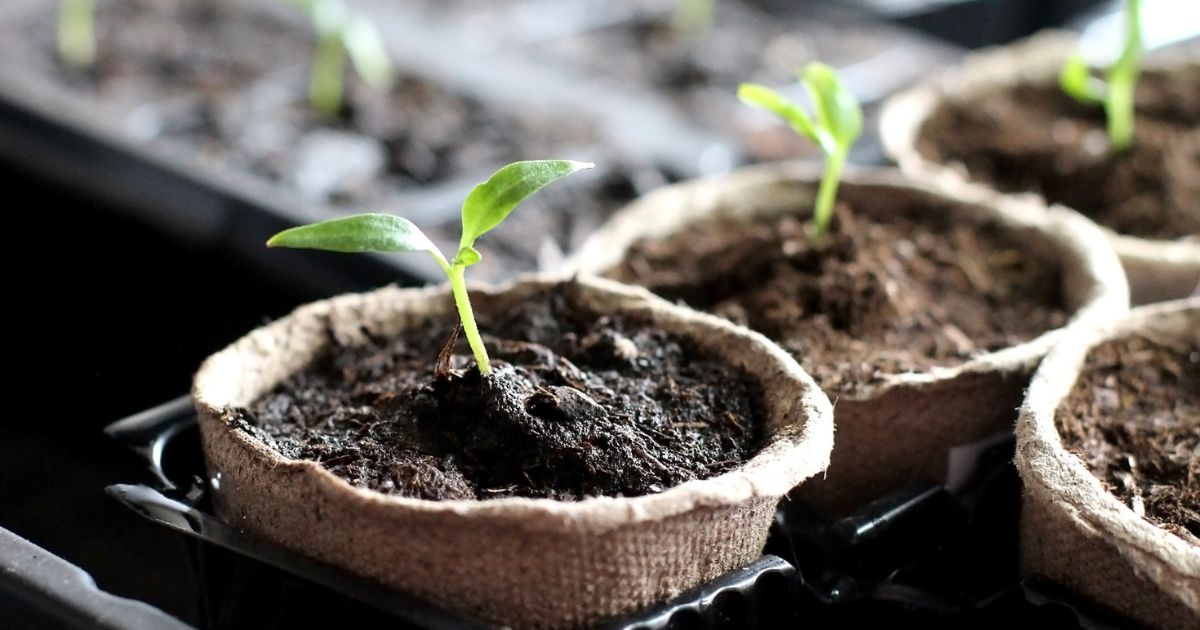
Pest Control Practices
In Texas gardening, managing pests is crucial for a healthy garden. We’ll explore how to leverage natural predators, choose organic pesticides, and implement companion planting for effective pest management.
Natural Predators
We can enlist the help of beneficial insects like lacewings and lady beetles to tackle common garden pests. By introducing and sustaining these predators in our garden, they naturally keep pest populations under control.
- Examples of Natural Predators:
- Bumble Bees
- Lady Beetles
- Praying Mantises
- Parasitic Wasps
Organic Pesticides
When we choose pesticides, we opt for organic options that have minimal impact on the environment. Neem oil is a favorite among gardeners as it effectively smothers pests without harming the plants or beneficial insects.
- Common Organic Pesticides:
- Neem Oil
- Citrus Oils
- Insecticidal Soaps
Companion Planting
We also enhance our garden’s defense by practicing companion planting. Pairing certain plants together can naturally repel pests – like planting marigolds near tomatoes to ward off aphids. It’s not just about repelling pests but also about creating a balanced ecosystem.
- Effective Companion Planting Pairs:
- Tomatoes and Marigolds: repels aphids
- Cucumbers and Nasturtiums: deters cucumber beetles
- Corn and Beans: beans climb corn, and the nitrogen fixed by beans helps corn grow
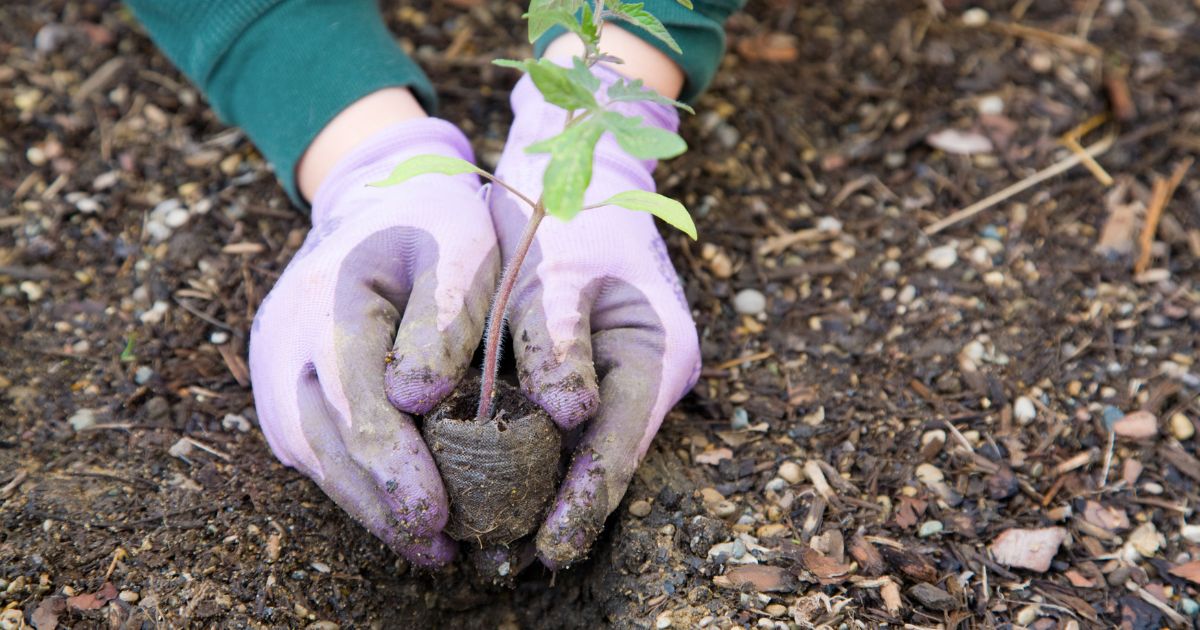
Weed Management Techniques
We’re diving into the lively world of weed management to keep our gardens thriving! First off, prevention is key. By maintaining a dense and healthy lawn, we stave off those pesky invaders. It’s all about the basics: fertilizing correctly, watering appropriately, and mowing at the right height.
Quick Tips:
- Water Deeply: Less frequently, to encourage root growth.
- Mow High: Taller grass shades the soil, hindering weed sprouts.
If weeds have already gatecrashed our garden party, we might need to invite some physical and chemical weed control strategies. Let’s roll up our sleeves and get physical:
- Pulling: Good old-fashioned hand-pulling works wonders.
- Hoeing: Slice off those weed heads.
- Mulching: A thick layer keeps weed seeds in the dark.
Handy tools at our disposal:
- Herbicides: For widespread issues, a calculated herbicide application can save the day.
- Landscape Fabrics: Lay them down to block those weeds.
In our masterful Texas garden, we’re not just growing plants. We’re cultivating a space of joy, and fighting weeds is part of the ride. Grab those gloves, and let’s show those weeds what we’re made of! 🌱✊
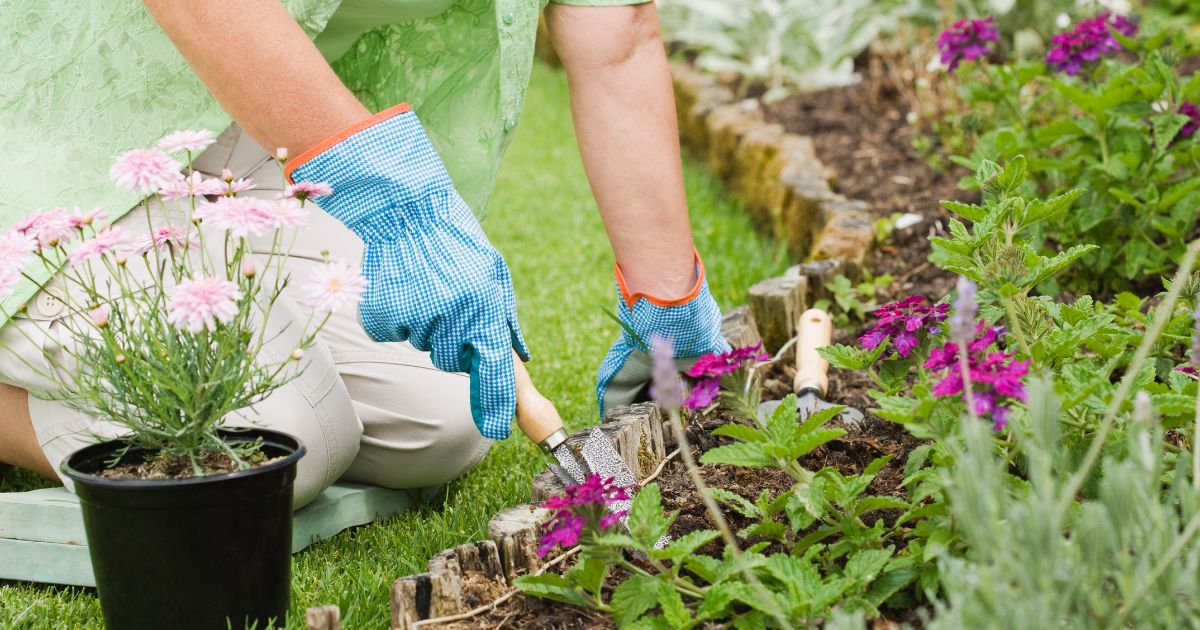
Embracing Seasonal Planting
We understand the excitement that comes with planting in tune with the seasons. Let’s dive right into ensuring that our gardens are lush and productive all year round by selecting the right plants for each season.
Spring Favorites
Spring in Texas is a vibrant time for our gardens as we welcome the end of the chilly weather. Early April is perfect for planting tomatoes, peppers, eggplant, and cucumbers, while late April calls for the sturdy sweet potatoes and pumpkins. To make the most of spring’s gentle warmth, we focus on these favorites that thrive as the days grow longer.
Summer Survivors
Texas summers are harsh, but we’ve got a lineup that endures the heat. Embrace the season by growing heat-tolerant crops like watermelon, peas, beans, okra, sweetcorn, and squash in late March. These summer survivors ensure our gardens remain a beacon of green even when the temperatures soar.
Fall Bloomers
With the first whispers of autumn, we begin planting crops in early August. Our autumn champions include root vegetables like turnips, carrots, and potatoes. We also see great success with leafy greens like kale and Swiss chard, along with cabbage, broccoli, and onions that bring our gardens to life just as summer fades.
Winter Hardy Varieties
Even in the colder months, our gardens can flourish. We invest in cool-weather annuals like snapdragons and pansies that offer stunning blooms. By choosing plants equipped to handle Texas winters, we keep our gardens vibrant and full of life, no matter the temperature.
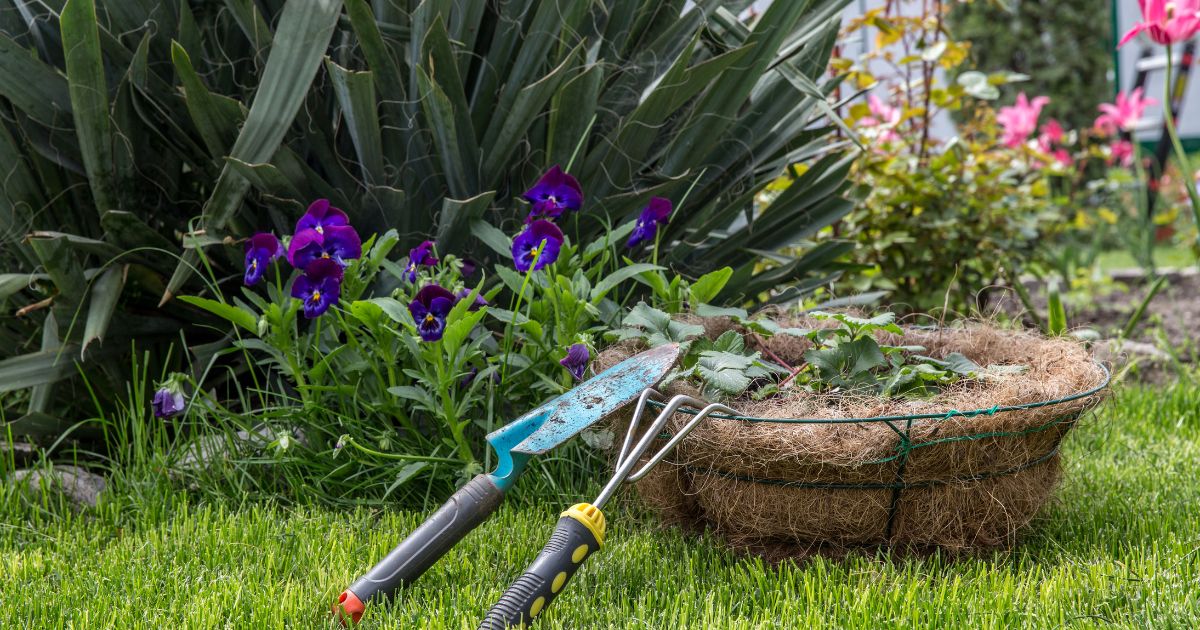
Gardening Tool Maintenance
We all know that taking care of our gardening tools is as important as tending to our plants! Proper maintenance not only prolongs the life of our tools but also makes our gardening efforts more efficient and enjoyable. Let’s dive into some tips that will keep our tools in top-notch condition.
Cleaning is Crucial: After each use, we should clean our tools to remove soil and sap. A stiff brush or a putty knife can be effective for scraping off caked-on dirt.
Sharpness for Success: Sharp tools make garden work a breeze. Regularly sharpen the edges of hoes, shears, and pruners. Texas A&M University suggests checking to see if your hoes need sharpening for an optimal gardening experience.
- Rust Prevention: It’s essential to keep rust at bay. Coat metal parts with oil after cleaning – mineral oil or even cooking oil will do. A Texas gardening expert recommends keeping hoes and other metal tools oiled to protect them against rust.
Organized Storage: Storing our tools properly cannot be overstated. Hand tools like trowels can be kept in a bucket of sand soaked in mineral oil. Larger tools, like rakes and shovels, should be hung to prevent bending and other damage.
- Lubrication is Key: Hinges and moving parts should be regularly lubricated. WD-40 or a similar product will ensure they move smoothly.
Remember, we take care of our tools, and they’ll take care of us, making our Texas gardening not just a chore but a true pleasure!
Raised Bed Construction and Benefits
We’re absolutely thrilled to share how constructing raised beds can revolutionize our gardening experience! Let’s dive straight into why these elevated havens are a game-changer and how to build them.
Materials: First things first, let’s gather our materials. Our options include:
- Untreated wood: Cedar and redwood are fantastic for their durability and resistance to rot.
- Concrete blocks: These give a sturdy, more permanent structure.
- Bricks: They offer a classic look and lasting strength for our garden.
Construction: Building a raised bed is simpler than we might think. We’ll need to:
- Measure our space and cut the materials to size.
- Secure the corners with screws or brackets to ensure robustness.
- Position our bed in a sunny spot and line it with landscape fabric to prevent weeds.
Benefits:
- Improved Drainage: Our plants will thank us, as the elevated soil allows for excellent drainage.
- Better Soil Conditions: We can tailor our soil mixture to meet the exact needs of our plants, enhancing their growth and health.
- Ergonomics: Say goodbye to back pain; raised beds reduce bending and kneeling.
- Pest Control: Easier to defend our plants from some unwelcome critters.
This is just a snapshot of the joys of raised bed gardening, and we can’t wait to get our hands dirty with this rewarding project. Let’s embrace these soil-rich frameworks and let the flora flourish!
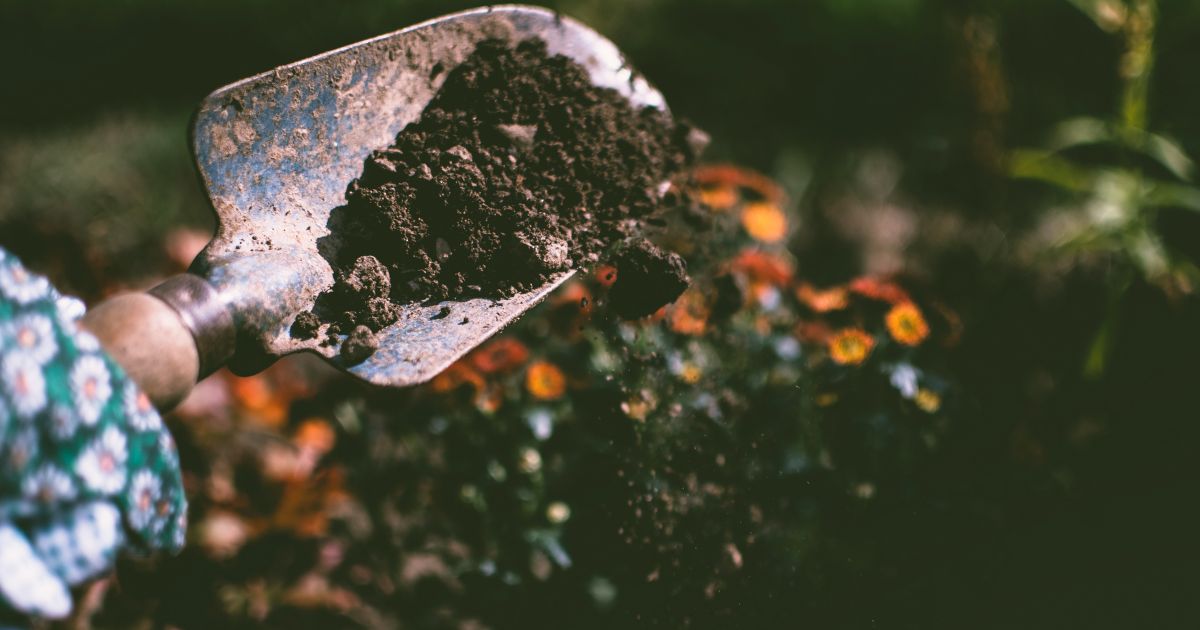
Composting for Soil Improvement
We all crave that dark, rich, sweet-smelling soil that sets the stage for vigorous plant growth and bountiful gardens. Let’s dig into composting, an easy and impactful way to improve our soil health!
What is Composting?
It’s a natural process turning our kitchen scraps, yard trimmings, and other organic materials into nutrient-rich soil conditioner. By managing a compost pile, we’re briskly cutting down on waste and giving our plants a delightful treat.
How to Start Composting:
- Choose a spot for your bin or pile; preferably a dry, shady area near a water source.
- Add your greens – like vegetable waste, fruit scraps, and coffee grounds.
- Toss in your browns – such as dead leaves, branches, and twigs.
- Balance wet and dry materials for optimal decomposition.
- Keep the pile moist as a wrung-out sponge, avoiding over-watering.
Maximizing the Benefits:
- Regularly turn your pile every couple of weeks to expedite the process.
- Aim for a mix of greens and browns to ensure proper balance – it’s like creating a gourmet meal for soil organisms!
- Add those grass clippings and leaves to make great compost.
Remember: It’s like cooking a stew – we layer, we mix, we wait, and soon we serve up beautiful compost to our hungry gardens. So let’s roll up our sleeves and enrich our soil!
Garden Design Principles
When we dive into garden design principles, we’re looking at creating a visually stunning landscape that thrives in Texas’s unique climate. We must focus on the nuances of color synchronization and texture variety, as well as the strategic placement of plants to captivate interest.
Color and Texture Balancing
In our gardens, balancing color and texture is essential. It’s not just about picking plants we love; it’s about creating a cohesive palette. For color balance, we use a mix of warm and cool tones. For example, we can pair the fiery reds of Texas Lantana with the serene blues of Bluebonnets. This creates a dynamic yet harmonious display. Textural contrast comes into play by mixing feathery grasses with glossy-leaved shrubs. Such contrasts draw the eye and add depth.
Plant Placement for Visual Interest
The placement of plants greatly influences our garden’s appeal. It’s not just randomness; it’s an art form. We start with taller specimens like the stately Rose of Sharon at the back and graduate down to the low-growing Gomphrena at the front. We use plants with various shapes – spiky, round, cascading – to maintain visual flow. The result? A garden that tells a story, leading the gaze from one stunning plant to the next with intent and purpose.
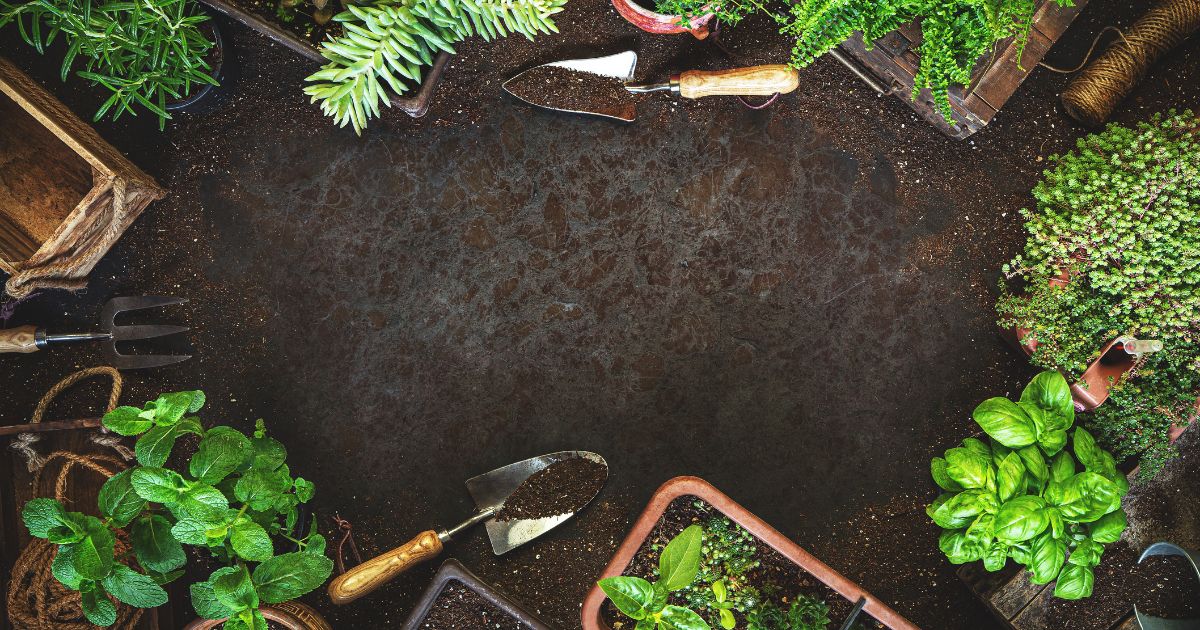
Container Gardening for Small Spaces
In Texas, our passion for gardening isn’t limited by the size of our outdoor space. Container gardening is our secret weapon, allowing us to grow vibrant plants in the most compact areas! Here’s how we make the most out of our quaint corners:
- Assess Your Sunlight: Most plants need at least 6 hours of direct sunlight—vegetables like tomatoes crave 8-10. We track the sun’s path to pinpoint the perfect spot for our containers.
- Choose the Right Containers: We opt for containers with adequate drainage and size to accommodate our plants’ growth. Bigger can be better for root development and moisture retention.
- Select Suitable Plants: Space-saving plants are perfect for us. We love patio tomatoes, cucumbers, and various herbs that thrive within arm’s reach of our kitchen!
| Light Conditions | Plant Suggestions |
|---|---|
| Full Sun | Texas Sage, Firebush |
| Partial Shade | Blackfoot Daisy |
| Indoors | Herbs (Basil, Mint, etc) |
- Soil and Nourishment: We don’t skimp on quality potting mix that retains moisture yet drains well. A regular feeding schedule keeps our container garden thriving with the necessary nutrients.
- Water Wisely: In our hot climate, watering is crucial. We check soil moisture often and water deeply to encourage deep roots, avoiding the midday heat to reduce evaporation.
Embracing these tactics, we transform our small spaces into lush, productive gardens, proof that in Texas, we don’t need acres to achieve our gardening dreams—just a little creativity and the right containers!
Native Flora Advantages
Embracing the beauty of Texas native plants is a game changer for our gardens! Here’s why we’re all for going native:
Adaptation Prowess: We’ll find that our local climate is no match for the resilience of native plants. They’ve had centuries to adjust to Texas’s unique weather variations. Imagine less fuss with maintenance, as these plants are accustomed to our climate extremes.
- Evolved for Local Conditions: No need for constant pampering; they thrive on their own!
- Weather Hardy: From scorching sun to occasional freeze, they stand tall.
Water-wise: Native species require far less water than non-natives, making them perfect candidates for xeriscaping. We get to save on our water bills and conserve a precious resource—win-win!
- Drought-Tolerant: Reduced need for irrigation, more time enjoying our garden.
- Lower Water Footprint: Our gardens become eco-friendly oases.
Ecosystem Champions: Our own backyards can become biodiversity hotspots by selecting plants like Texas sage and purple coneflower. They offer vital sustenance to pollinators and wildlife, fostering a balanced local ecosystem.
- Boost for Bees & Butterflies: A buffet for pollinators is at their wingtips!
- Wildlife Welcoming: Birds and critters find refuge in a garden that speaks their language.
Let’s make a pact to put native plants at the forefront of our gardening plans. Not only does it simplify our gardening routine, it also pays homage to Texas’s rich plant heritage and contributes to a healthier planet. Let’s roll up our sleeves and plant with purpose!
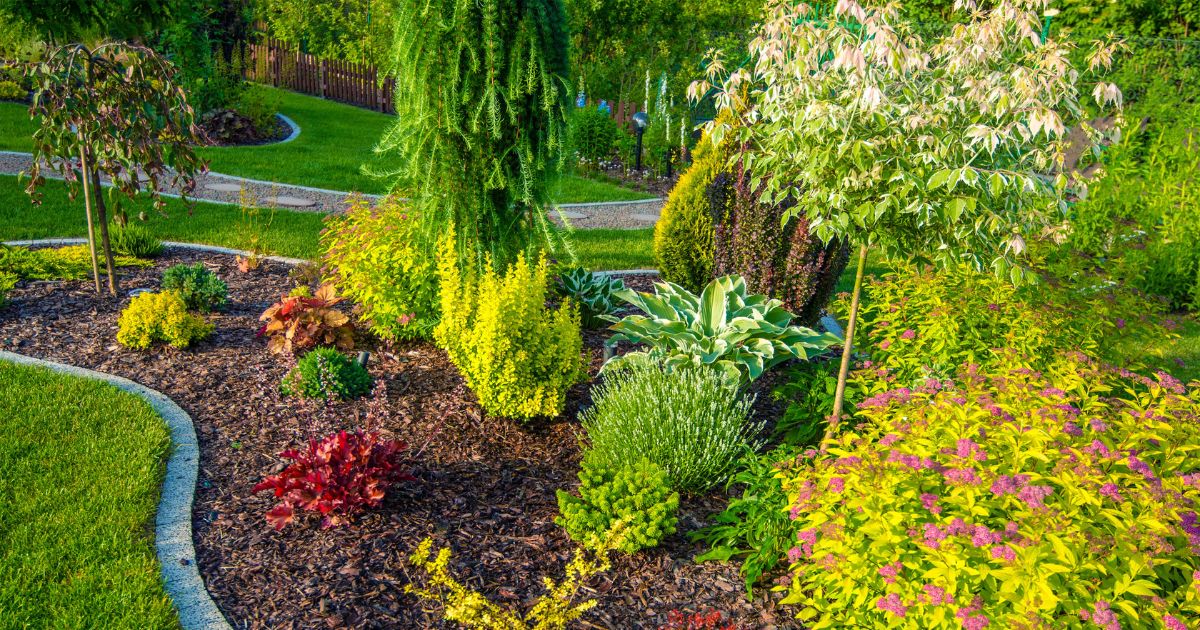
Attracting Beneficial Wildlife
We love to see our gardens buzzing with life! To turn our Texas gardens into a haven for beneficial wildlife, let’s focus on creating a welcoming habitat for friends like bees, butterflies, and birds.
Here’s what we can plant:
- Flowering Plants: We’ll attract bees with plants like goldenrod, Texas lantana, aster, and varieties of mistflower.
- Nectar Sources: By adding nectar-rich flowers, we convert our gardens into a paradise for ladybeetles, hoverflies, and parasitic wasps.
Design Tips:
- Group plants together to create a big visual “hello” for passing wildlife.
- Incorporate layers in our garden, such as trees, shrubs, and ground covers for varied shelter.
Water Sources:
Include a birdbath or a small pond so our winged pals have a place to drink and splash around.
By choosing appropriate native plants that match our garden conditions, such as sunlight, soil type, and moisture levels, we’re ensuring our garden is a wildlife magnet. Remember to prepare our soil properly, as Texas soils can vary widely.
Let’s plan our garden calendar effectively by understanding our zone’s frost dates, which are crucial for planting and harvesting. Have a look at the gardening zones for guidance.
And let’s not forget, our native plants are not just beautiful, they’re vital for wildlife! By incorporating regionally native plants, we’re literally breathing life into our landscapes and providing essential habitat for creatures big and small.
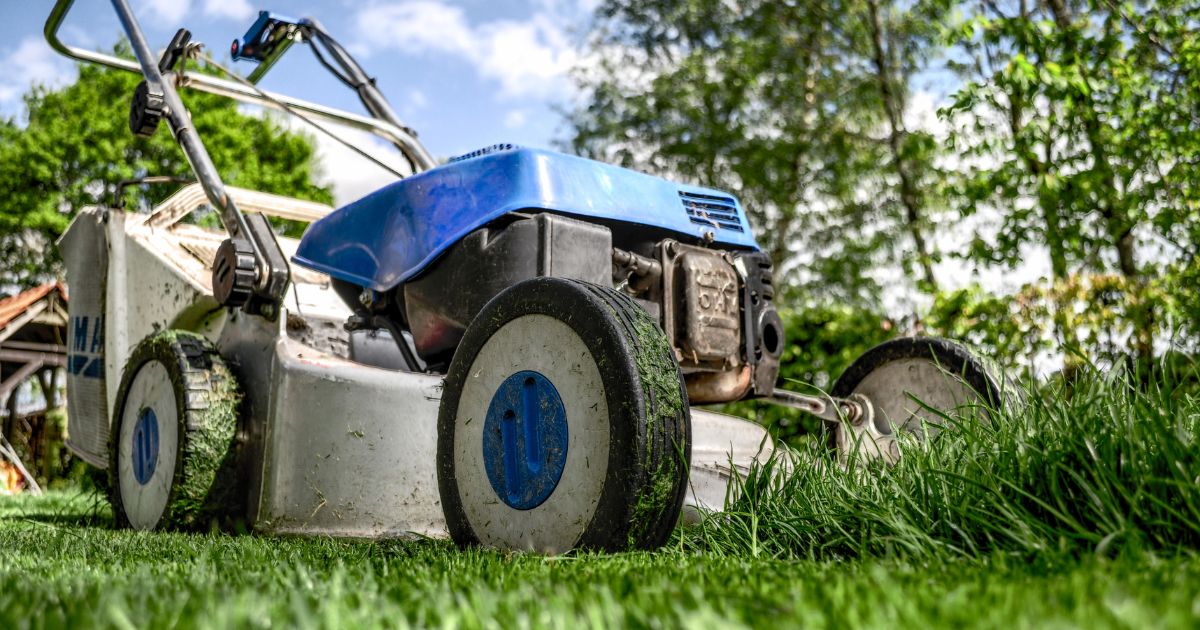
Plant Disease Prevention
We, the passionate gardeners of Texas, can safeguard our beloved plants with these proactive strategies to prevent disease! Embracing these methods can lead to healthier, more robust gardens.
Choose Disease-Resistant Varieties: When we select plants, it’s critical to opt for varieties that boast resistance to common diseases in our region. This step is fundamental in building a strong foundation for a healthy garden.
Good Garden Hygiene: Keeping our garden tools clean is a must. After each use, we should clean and disinfect them to minimize the risk of spreading pathogens.
Proper Plant Spacing: By allowing ample space between our plants, we ensure good air circulation, which is essential in preventing the growth of fungi.
Quarantine New Additions: Before introducing new plants into our gardens, it’s wise to keep them separate for a while to observe for any signs of disease.
Water Wisely: We should water our plants in the morning to allow moisture on the leaves to dry throughout the day, reducing the likelihood of fungal infections.
| Do’s | Don’ts |
|---|---|
| Water at the base | Overcrowd plants |
| Mulch to prevent splashing | Neglect pruning |
| Rotate crops regularly | Ignore pests |
Regular Monitoring: By keeping a keen eye on our plants, we can catch and address any signs of disease early, when they are easiest to manage.
Should we encounter any issues, we can turn to trusted resources and roll up our sleeves and garden with confidence, knowing we’re equipped to keep plant diseases at bay!
Herb and Vegetable Gardening Tips
Let’s get our hands in the soil and start an incredible journey of gardening right in our Texas backyard! Growing our own herbs and vegetables can be a thrilling and rewarding experience, and we’ve got some solid tips to make our garden flourish.
Choosing the Right Plants: First off, we need to select the right mix of plants. Opt for herb varieties that not only thrive in Texas heat but can also handle a chill, like ‘Arp’ rosemary or basil. Meanwhile, make sure to choose vegetable plants that suit our taste and garden space. If we’re keen on space-saving, vine crops like cucumbers and squash are smart picks.
Soil Preparation and Fertilization: A successful garden begins with well-prepared soil. Mix in plenty of organic matter to enrich our soil, and keep it well-drained. For the precise nutrient kick, a good balance of fertilizers is critical.
- Regular Watering: As Texas seasons can be quite unpredictable, consistent watering becomes paramount. Our garden will need about an inch of water per week, so let’s set up a watering schedule to keep our plants from stress.
- Pest Control: No need to let pests ruin all our hard work. We can keep our garden organic and still manage pests by using natural predators or setting up barriers.
- Harvesting: It’s rewarding to harvest our own produce! For herbs, we can get the best flavor by picking them early in the morning, and for vegetables, harvesting at the peak of ripeness ensures the best taste and nutritional value.
We’re off to a fantastic start, let’s keep these tips in mind and watch our garden grow!
Share the post "Master Texas Gardening with These 21 Tips: Your Ultimate Green Thumb Guide!"
Christian Linden is a seasoned writer and contributor at Texas View, specializing in topics that resonate with the Texan community. With over a decade of experience in journalism, Christian brings a wealth of knowledge in local politics, culture, and lifestyle. He holds a Bachelor's degree in Communications from the University of Texas. When he's not writing, Christian enjoys spending weekends traveling across Texas with his family, exploring everything from bustling cities to serene landscapes.











